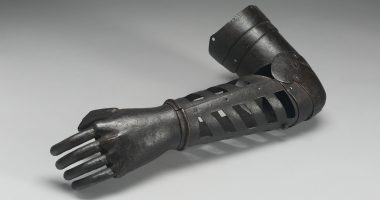

As their problems mounted, they went so far as to mount Nest cams in the Frobot cabinets to capture video of what might be going wrong inside. On one occasion, they watched as the ingredients mixture inside a Tesla-factory Frobot bubbled up and out of the Taylor machine, catastrophically hemorrhaging liquid yogurt into the surrounding cabinet. Seven hours later, they saw a Tesla food service worker casually open the cabinet, leave the sticky mess untouched, and quietly replace a missing plastic paddle component he’d forgotten when cleaning the machine.
Their business, it soon became clear, was the very opposite of automation: No one at Levi’s Stadium or Tesla seemed capable of setting up or maintaining a Frobot without the constant hands-on help of Frobot’s founders. And the problem was the Taylor machine at Frobot’s core. “Holy shit,” O’Sullivan recalls realizing. “These machines just suck.”
It began to dawn on O’Sullivan and Nelson that they would need to pivot. And they had already unwittingly built the prototype for a different product, one that offered a solution to the very problem killing their current business.
For the next year-plus, they honed the little computer component of Frobot that eavesdropped on the Taylor ice cream machines’ data, building features that allowed visibility into and control of all the machine’s variables—including some that automatically bypassed the the 5-2-3-1 code to access its service menu—a software interface for diagnosing and troubleshooting the machine’s many hiccups, and a sleek case for the Raspberry Pi mini-computer that powered it.
In the spring of 2019, they relaunched their company, this time as Kytch. (In a sign of the grandeur of their ambitions, they chose a name that suggested the idea of an entire connected kitchen, leaving open the possibility of products that went well beyond Taylor’s ice cream machines.)
When Kytch launched in April of that year, Nelson drove around the Bay Area looking for any restaurant that used a Taylor machine, pitching the franchisees on LinkedIn, and offering a six-month free trial before a $10-a-month subscription kicked in. After finding a few initial customers at Burger Kings and Super Duper Burgers, they finally began to tap into their real target market, the franchisees who not only represented the biggest single collection of Taylor machine owners but the ones who used the most complex, most often borked digital version of Taylor’s product: McDonald’s.
In the fall of 2019, as they began to penetrate the baroque inner workings of the McDonald’s world, O’Sullivan and Nelson were stunned to learn that most restaurant owners had never accessed or even heard of the service menu that unlocked variables like the temperature of the machine’s hoppers or the glycol used for its ultra-fussy pasteurization process. “It was a real ‘aha’ moment,” Nelson says. “Why are these features that are so important hidden behind this menu that most people don’t know about?”
Meanwhile, many McDonald’s owners were paying thousands of dollars a month to Taylor distributors in service fees, often for making simple changes locked behind that menu. So they added a feature to Kytch called Kytch Assist that could automatically detect some of the machine’s common pitfalls as they happened, and tweak those hidden variables to prevent some of the mishaps before they occurred.
One franchisee, who asked that WIRED not identify him for fear of retribution from McDonald’s, told me that the ice cream machine at one of his restaurants had been down practically every week due to a mysterious failure during its pasteurization cycle. He’d scrutinized the assembly of the machine again and again, to no avail.
Installing Kytch revealed almost instantly that an overeager employee was putting too much mix in one of the machine’s hoppers. Today he wakes up every morning at 5:30, picks up his phone, and confirms that all his machines have passed their treacherous heat treatment. Another franchisee’s technician told me that, despite Kytch nearly doubling its prices over the past two years and adding a $250 activation fee, it still saves their owner “easily thousands of dollars a month.”








